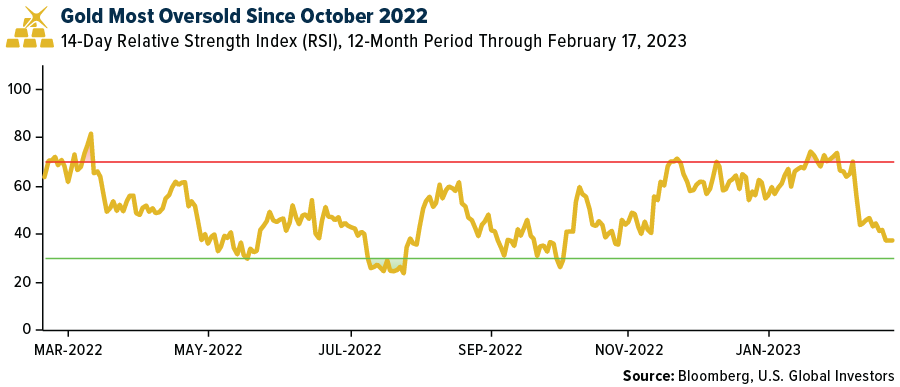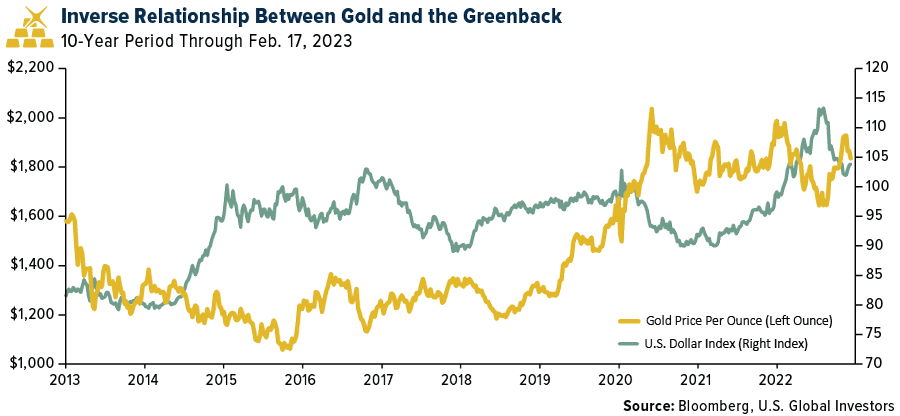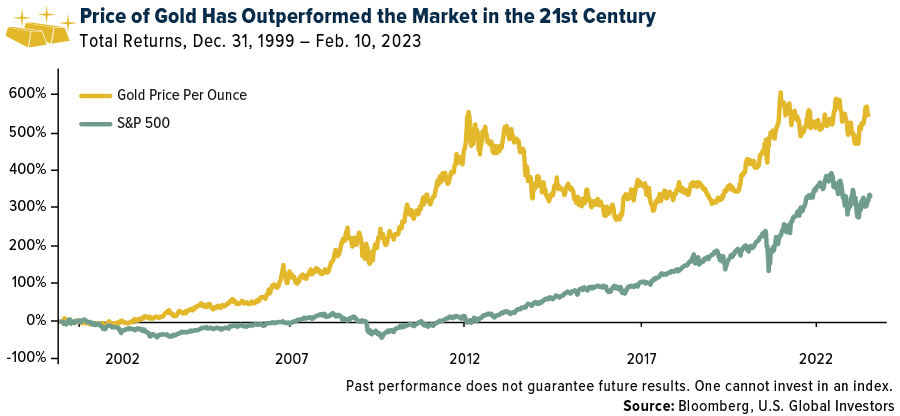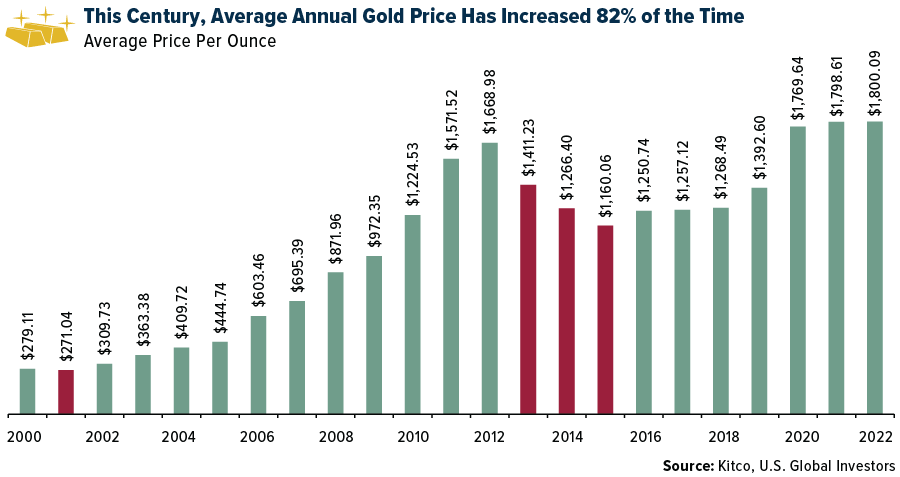Gold is nearing its strongest buy signal in four months as the U.S. dollar eases off a rally that’s carried the greenback to its highest point since early January. According to the 14-day relative strength index (RSI), gold was at its most oversold level since October 2022 at the end of last week, indicating it may be time to consider buying in anticipation of mean reversion.

As I’ve shown you many times in the past, gold and the dollar share an inverse relationship, since the precious metal is priced internationally in the greenback. When the dollar is strong, it may be time to accumulate gold. Conversely, when the dollar begins to cool, it may be time to take some profits.

The Economics Of Underwear
Gold is currently about 6% off its 2023 high of just under $1,960 an ounce, under pressure from the dollar, which has made gains against a basket of world currencies on economic data that all but guarantees additional rate hikes. Unemployment sits at 3.4%, the lowest reading in more than half a century, giving the Federal Reserve the go-ahead to continue its fight against inflation.
Last week’s consumer price index (CPI) report showed that inflation is still running hotter than expected. Consumer prices rose 0.5% between December and January, up from an increase of 0.1% in the November-to-December period. Some of the items and services that jumped the most in price in January were utility gas services, eggs, breakfast sausage and ham, instant coffee and—just in time for tax season—tax return preparation services.
The price of men’s underwear rose 5.5% month-over-month, which is notable since this was former Fed Chair Alan Greenspan’s favorite economic indicator. According to Greenspan, a jump in underwear demand could mean that the economy is on solid footing, the reason being that no one’s aware if you’re wearing a pair of old skivvies or the latest brand-name undergarments. That underwear prices jumped so much from December to January implies that consumers are confident enough in the economy to splurge on something that’s generally out of public view.
Gold Still Beating The Market Over The Long Term
Gold’s technicals may be telling us it’s time to buy, and its long-term fundamentals remain healthy and attractive. In the chart below, I’ve updated the performance comparison between gold and the S&P 500 since the start of the century. The metal is still beating the market as of February 10, by a factor of approximately 1.6.

In 2022, gold’s price was mostly supported by strong bullion demand in the U.S. and Western Europe and record purchases by central banks. We may see a repeat of the voracious buying this year, if one forecast turns out to be right.
Goldman Sachs analysts believe that global central banks are on track to add an unprecedented amount of gold by the end of 2023 as they seek to diversify away from the U.S. dollar. That’s especially the case following U.S.-led sanctions against Russia for its invasion of Ukraine.
Central banks purchased a record 1,136 tons of gold in 2022, the equivalent of 40 million ounces, according to the World Gold Council (WGC). Turkey was the biggest official buyer at roughly 147 tons, followed by China at 62 tons and Egypt at more than 44 tons.
But banks could top that amount this year, with imports potentially exceeding 1,200 tons, Goldman says. Combined with improving economic conditions in China and India, the world’s two largest consumers of gold, the precious metal’s price could average $1,950 an ounce in 2023.
Although not a record total amount, $1,950 would represent a record average amount, as you can see below.

In 19 of the past 23 years, or around 82% of the time, the average price of gold has risen year-over-year. If the metal were to average $1,950 this year, it would mark the eighth consecutive year of average-price increases.
Related: Central Banks Gobbled up More Gold Last Year Than in Any Year Since 1967


